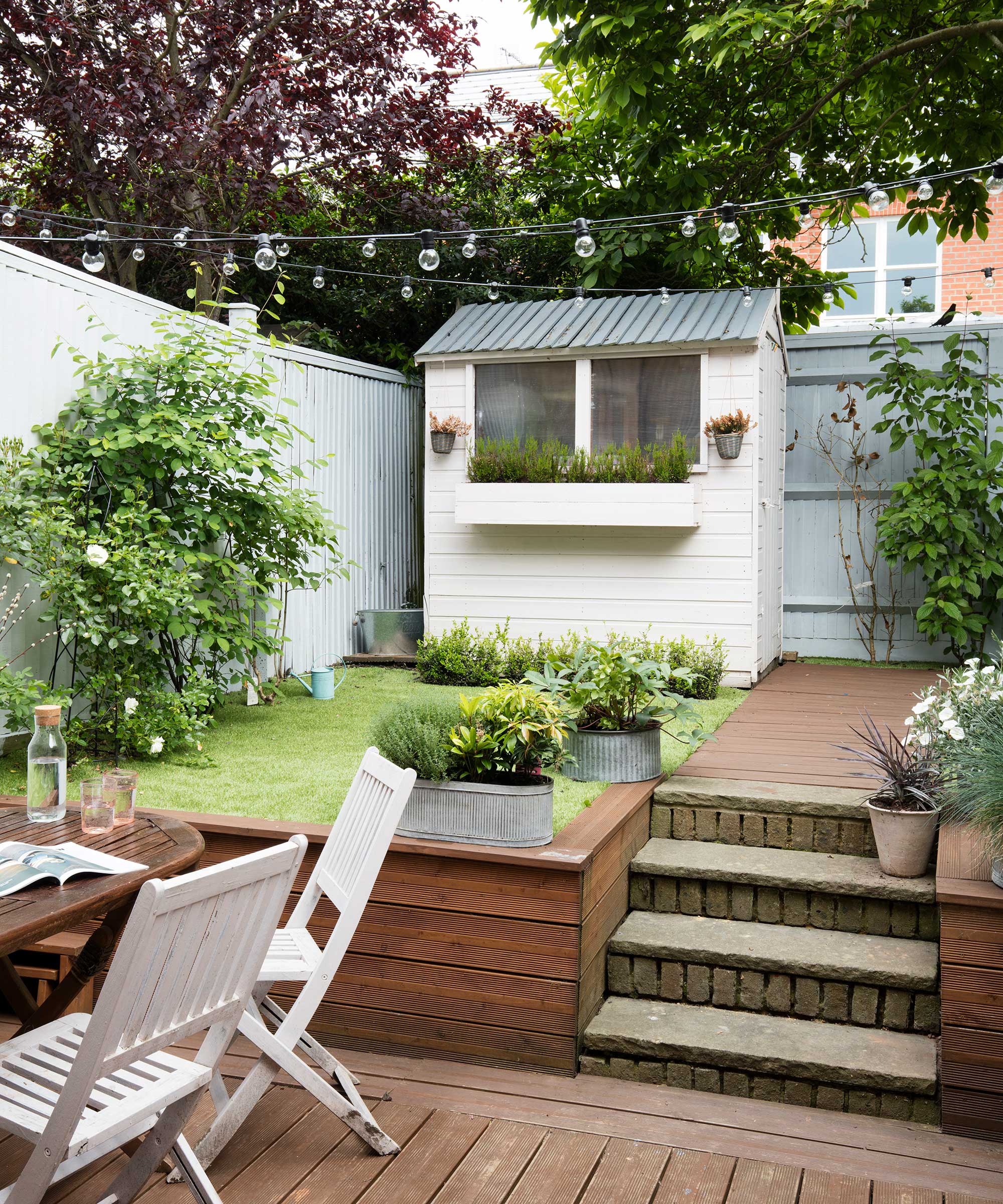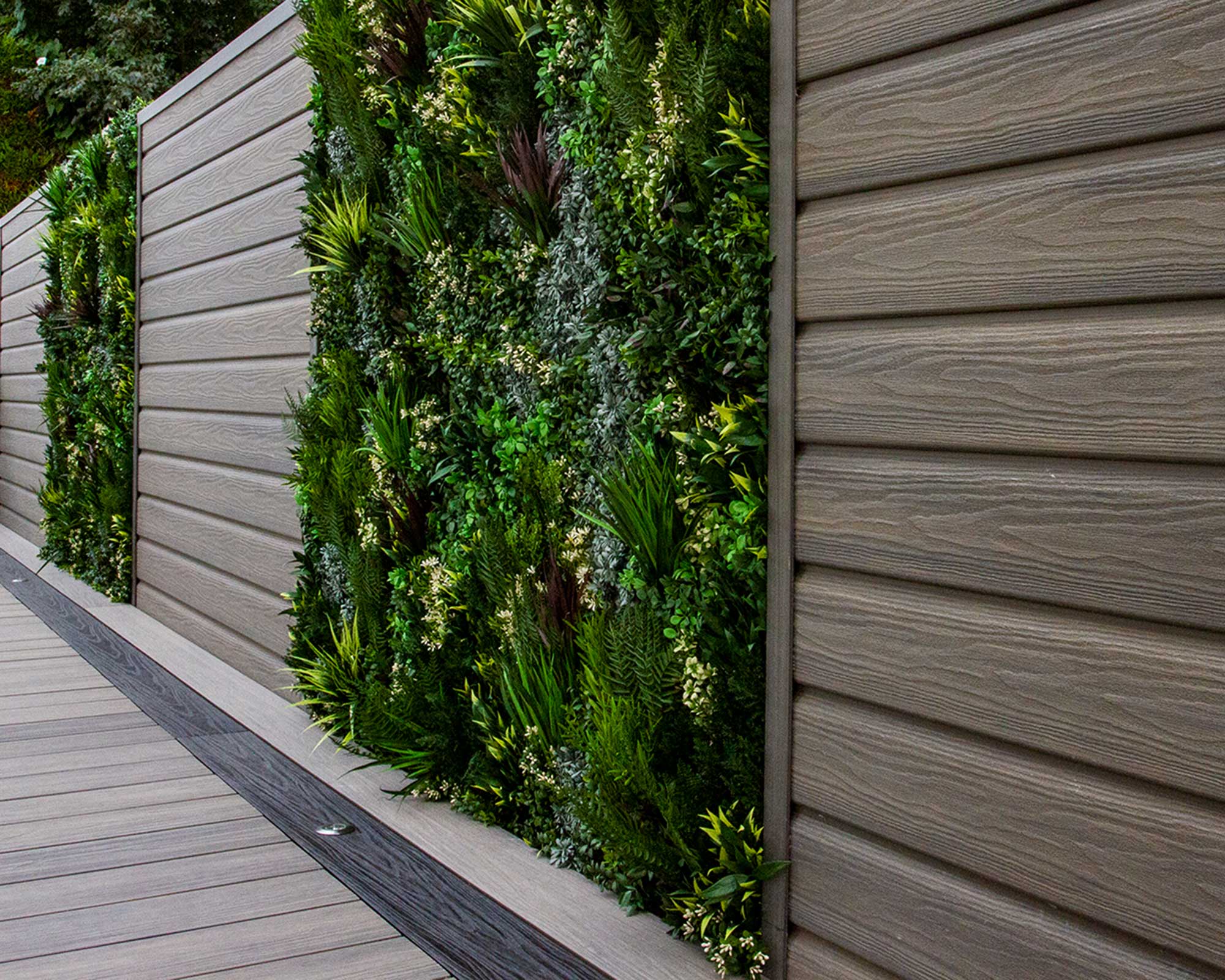Retaining wall ideas: 10 sturdy and stylish structures for backyards
Thinking of terracing your plot? You need these retaining wall ideas – there are plenty of looks to choose from


You'll need some retaining wall ideas if you want to transform an awkward, sloping plot into a smart, terraced space. They're the go-to approach for carving a landscape into leveled areas by holding back and supporting soil. And there are lots of good-looking options to choose from.
As with all garden wall ideas, you will want to pick a design that isn't just functional but also complements the aesthetic of your plot. Of course, there's your budget to think about too. But, no need to panic. From timber-clad designs to traditional stone and more, there is a retaining wall out there that will complement your backyard perfectly, and it needn't cost the earth.
We've brought together a mix of retaining wall ideas, so you can start planning your own garden makeover.
10 retaining wall ideas to level your plot in style
Whether you're looking for something modern or traditional to add to your landscaping ideas, you're bound to find a retaining wall that suits your stylistic vision below.
1. Smarten up retaining walls with cladding

Add a smart veneer to your retaining walls
If you're on the lookout for chic tiered garden ideas, then take a cue from this beautiful backyard. We love how the bright white timber-cladded walls contrast against the colorful blooms – plus they will keep the seating space feeling sheltered from the wind.
'When building a retaining wall, it's a good idea to think about how its appearance will fit with the style of a garden,' says Charles Taylor, Director at Composite Prime. 'While a brick or stone wall is functional, homeowners can add a cladding facade to enhance its appearance and offer added protection from a range of elements.
'There's always a possibility that mud and dirt could find its way through a retaining wall, which can be inconvenient if the wall is close to the house. Cladding reduces the amount of dirt that runs off the wall, keeping the area cleaner and much more practical,' he continues.
'Cladding is likely to be exposed to a lot of moisture on a retaining wall,' Charles adds. Composite materials can be a low-maintenance and more durable alternative to timber, and many provide a natural wood grain finish.
2. Define a raised lawn from a patio with brick walls

A traditional design that will always be in style
Separating your patio ideas from a lawn with a retaining wall is the perfect way to subtly define zones. And red brick will never go out of style.
Introduce curves or stick to straight lines to mark out the boundaries of the different spaces. This design above frames the circular dining set beautifully while drawing the eye to the central pathway above.
Wider sections of the wall can be topped with stone slabs and can double up as seating or for positioning planted containers up high.
3. Add pockets of planting for extra color

A bright and cheery scene
Consider merging your flowerbed ideas into your new retaining wall for a colorful and laid-back display.
Breaking up the design into planting pockets, all in different sizes and shapes, adds a sense of fun to this scene. And there are plenty of paved surfaces included for accessing the plants when it's time to water them.
Keep the look contemporary by using smooth concrete walls, or opt for rustic charm with stone in a variety of sizes and arrangments, as seen here.
4. Soften concrete walls with blooms

These planting picks will fill the air with fragrance
Concrete can make a sturdy choice for retaining walls, especially if you are working with steeply sloping spaces. Some people embrace the industrial tone that this material offers, but if you're not so sure, there are a few easy ways to soften the look.
Adding plenty of trailing or climbing plants above and below is one lovely approach, so make sure you leave room for some flowerbeds. If you look closely at this scene, you'll spot how even the steps have been built with small planting sections for a line of lavender.
You can also give your concrete walls a new color with a lick of exterior masonry paint. A pale hue will lift the space and help it to feel less imposing.
5. Add textural interest with gabion walls

Gabions are simple to construct
Gabions are a great approach to retaining wall ideas. They can be constructed quickly, are low-maintenance, and, if you can source the stones inside at an affordable price, can fit the bill if you're looking for cheap garden ideas. They can also be good for drainage, as the gaps between the stones let rainwater through, thus relieving pressure building up behind the wall.
They are made from durable wire baskets that are simply packed with stones. A top tip is to use cheaper stones in the center or along the back of the wall, then use more attractive stones at the front where you can see them.
6. Opt for timber for a natural look

Complement decking with timber walls
Give your backyard retaining wall ideas a more naturalistic vibe by opting for timber (or timber-effect composite). Ideal for smaller structures, the results look fantastic and work especially well alongside a deck. Take this set-up, for instance.
You could even choose to use garden sleepers for your design. Just be sure to apply a weatherproof treatment if using real wood, to help it stand up to the elements.
7. Get creative with curves

This wall has been painted in 'Cool Arbour' exterior masonry paint from Little Greene
These curved, rendered walls add bags of character to this garden while supporting a raised, planted display. Painted in a sparkling white, they soothe the space and frame a nook of neat lawn and seating beautifully.
You might first think to stick to sleek, straight lines if you're looking for modern garden ideas. But, we think something sculptural like this would work just as well. You could even try them for your front garden wall ideas if the entrance to your house is on a slope – they'd certainly make a great first impression.
8. Paint them to match your scheme

A Mediterranean-inspired space
If you're looking for more of a Mediterranean feel for your space, then pick a hot-toned hue for your retaining wall.
This terracotta shade will instantly transport you to a sun-soaked courtyard garden in Italy or Spain. And it's simple to achieve with a few coats of exterior masonry paint.
Here, the rendered concrete walls are used to create giant, raised planters that bring a fresh splash of green to the zone. And don't you just love that statement outdoor fireplace, too?
9. Add trellises for climbing plants

Make large retaining walls more interesting
Even big and tall retaining walls can still offer plenty of visual interest to a garden – they don't just have to be blank and boring.
The walls on either side of this staircase have been brought to life due to the sturdy timber trellised screens. They give the view a more authentic, naturalistic tone – even more so as the trained hydrangeas continue to establish.
Securing simpler trellises to your walls is another option. You can find plenty of inspo in our trellis ideas for gardens feature.
10. Add sections of living walls

A contemporary look featuring HD Clad Pro in Cedar Brown from Composite Prime
As well as using trellises to adorn your walls in greenery, you can also add sections for living walls. These are normally constructed with multiple, vertical pockets and can be filled with a wide array of plants – or even food crops.
The result is one that's very on-trend right now, and it's a particularly useful approach for upping the growing potential of smaller plots. Combine with composite cladding, as seen here, for an attractive contrast in textures.
What is the best material for a retaining wall?
'To make a retaining wall you can use various materials, but it will need to be strong enough to hold the weight of what is behind,' says Leigh Barnes at Jacksons Fencing. 'Most commonly, retaining walls are created using stone, bricks, concrete blocks, or treated timber.'
The best retaining wall for you depends on a few factors, including how high you need it to be and what style will fit with the rest of your plot and your budget. We've rounded up some tips on the most popular types below.
Timber
'Timber offers the most natural-looking material for a retaining wall and is often the most cost-effective,' Leigh says. Timber for retaining walls is around $15–$25 per square foot (£11–£19) according to HomeAdvisor.com, so it's a good choice if you're on the lookout for cheap retaining wall ideas.
'The timber used must be treated for life in the ground,' Leigh adds. 'Look out for a long guarantee that protects the timber from rot and insect attack which are common threats for in-ground timber.'
Thomas Goodman, construction expert at MyJobQuote.co.uk says that timber retaining walls are easy to install and may be used in practically any style. 'It can last for 20 years or more if properly installed with the right materials, waterproofing, and preservative,' he adds.
Concrete
Concrete blocks 'can be used to construct curves, but only for walls less than four feet tall,' says Thomas. Veneers can be added for a more aesthetic appeal, whether in stone, brick, or composite cladding.
You can also have retaining walls made of poured concrete, which are tough and long-lasting – however, you often need added supports installed to ensure they don't crack.
The costs of concrete blocks are around $10–$15 per square foot (£7.50–£11), while poured concrete falls around the $20–$25 per square foot mark (£15–£19), as HomeAdvisor.com says. Don't forget to factor in labor costs too, if you're having a pro install your wall for you. You can find out more about the costs of landscaping in our guide.

Stone walls add plenty of character
Brick
Brick is 'a strong and long-lasting material, but it necessitates precise drainage arrangements,' says Thomas. They are also heavy, so will need good foundations installed. You can use bricks as a veneer to give concrete retaining walls a more attractive look, or use them alone to make smaller walls (up to 4ft). Bricks cost $14–$15 per square foot (around £10.50–£11), according to HomeAdvisor.com.
'It complements classic homes and landscapes, and the installation procedures produce a robust, long-lasting structure,' adds Thomas.
Stone
Natural stone walls are labor-intensive to build, and if you factor in installation costs, can be around $25–$40 per square foot (£19–£30), according to HomeAdvisor.com. These types of retaining walls can lead to issues with drainage, but on the plus side, they can look truly beautiful, evoking a traditional tone. Pair with natural stone paving ideas for a sense of cohesion.
If you only need a small retaining wall, you could opt for a dry stone approach – a very old method of construction. These structures are built without mortar or concrete flooring. It may seem surprising, but they can be super strong and offer tons of charm.

The garden was always a big part of Holly's life growing up, as was the surrounding New Forest where she lived. Her appreciation for the great outdoors has only grown since then. She's been an allotment keeper, a professional gardener, and a botanical illustrator – plants are her passion.
